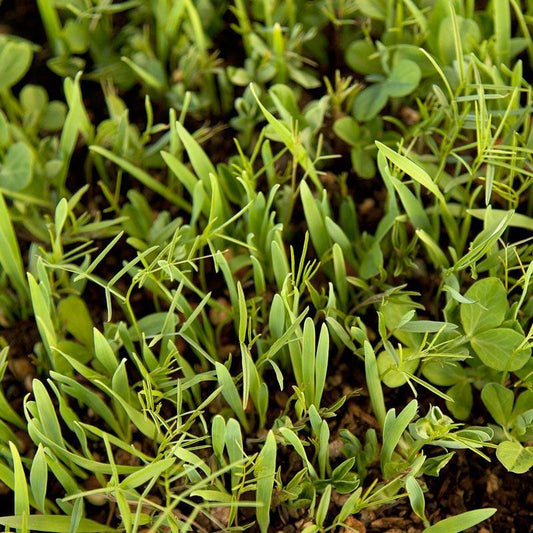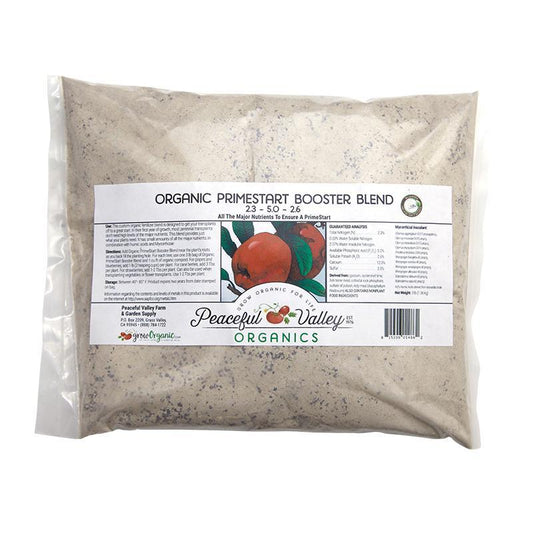Debunking Bare Root Fruit Tree Myths
Home orchards are a rewarding way to enjoy fresh, homegrown fruit. Bare root trees are one of the best ways to start your orchard, but there are many misconceptions about them. In our video, Tricia debunks common myths about planting and caring for bare root trees.
Myth 1: All Fruit Trees Need Two of the Same Variety for Pollination
Not all fruit trees require a pollination partner. Some varieties, like figs, nectarines, and pomegranates, are self-fruitful, meaning they don’t need another tree to produce fruit. However, other trees, like cherries or apples, require a compatible pollinator. Planting two of the same variety won’t help—be sure to select a suitable pairing. For example, a Minnie Royal cherry needs a Royal Lee cherry for proper pollination.
Myth 2: Fill the Planting Hole with Fertilizer and Compost
It may seem beneficial to enrich the planting hole with compost or fertilizer, but doing so can cause root circling and instability. Instead, plant directly in native soil to encourage strong root growth. If you want to improve soil fertility naturally, apply a low-nitrogen fertilizer like PrimeStart Booster Blend.
Myth 3: Newly Planted Trees Always Need to Be Staked
Staking is not necessary for most new trees. Trees that sway in the wind develop stronger trunks and root systems. Only stake if the tree is unstable due to weak roots or strong winds. If staking is needed, use soft straps and remove them after 1-2 years.
Myth 4: Pruned Branches Need to Be Sealed
Sealing pruned branches with wound dressing is unnecessary. In fact, it can trap moisture and promote disease. Trees naturally heal by forming a protective barrier over the cut. Instead of sealing, focus on proper pruning techniques and soil care to ensure the tree recovers quickly.
Benefits of Planting Bare Root Trees
Bare root trees offer several advantages:
- They are often more affordable than potted trees.
- They establish stronger root systems due to direct soil contact.
- They are easier to plant and transport.
For those interested in planting heirloom varieties, the Calville Rogue Apple offers exceptional flavor and a rich history rooted in 19th-century France.
Explore Our Selection of Bare Root Trees
Start your home orchard with high-quality bare root trees. Browse our selection of fruit and nut trees to find the perfect varieties for your climate and garden.
Bare Root Tree Planting Resource Hub
Explore expert advice and practical tips to successfully plant and care for your bare root fruit and nut trees.
Essential Reading
-
Planting Your Bare Root Fruit & Nut Trees
A step-by-step guide covering site selection, soil preparation, and planting techniques to ensure your tree's success.
-
Rootstocks: The Unsung Heroes
Understanding the role of rootstocks in tree growth, disease resistance, and fruit production.
-
Planting Bare Root Trees for Beginners: A Comprehensive Guide
A beginner-friendly guide covering the basics of bare root tree planting and care.
















4 comments
Forrest, Thank you so much for the comments. Glad to hear you enjoy our website. And thanks so much for sharing!
Thank You Tricia. I am sharing this to my friends on Facebook. Lots of them are Master Gardeners out of University of Arizona CALS. Many others are involved in the local Farmers Market. And soon “Food Hub”.
I enjoy the Peaceful Valley Site ands the information you share. Hopefully by sharing I’ll be able to steer some folks towards your website and purchasing.
Thank You. Always Frosty.
Tom, Wonderful that you got trees from us. We have healthy beefy bare root trees and glad that they worked out for you. Nothing like going out to the orchard and picking your own fruit!
Great information, and even better, I received some of your amazingly healthy, well-rooted bareroot trees this week. Really handsome specimens ready to be planted. Thanks for providing quality trees at affordable prices.